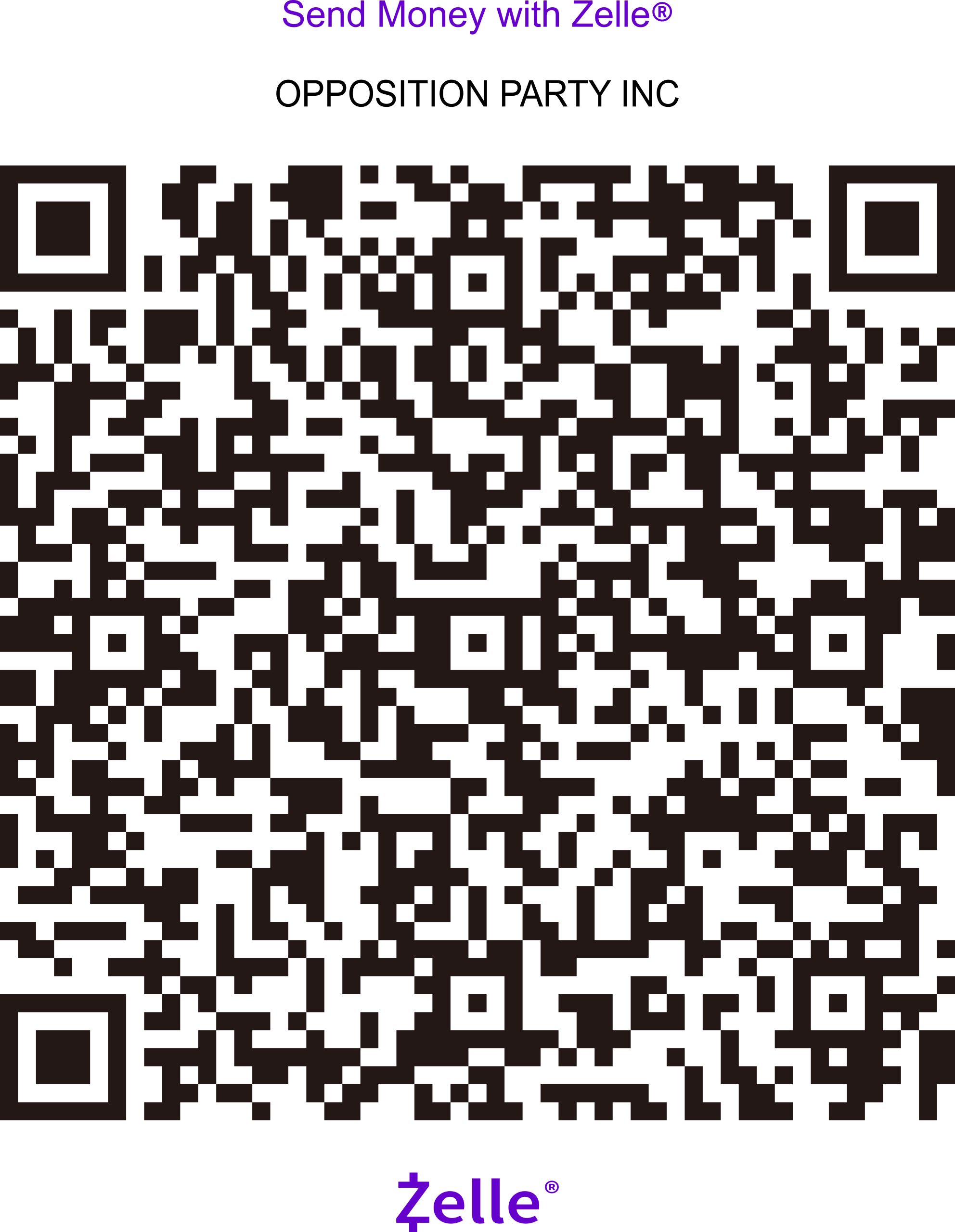The Jiangyou Anti-Tyranny Incident and the Victory of the Common People of Bangladesh
作者:袁崛 编辑:何清风 责任编辑:鲁慧文
翻译:何兴强
7月22日,四川省江油市发生未成年人校园霸凌案,一名14岁女中学生被另外三名女中学生辱骂、威胁和殴打。相关视频公布在网上后,引进公众愤怒。 8月4日警方公布案情及处置情况,引发民众对警方的质疑与愤怒,从而发展成为大规模的抗议事件。

大批江油市民被警方暴力抓捕,甚至送上运猪车。
8月4日,大批市民聚集在江油市主要路口进行游行抗议。警方设置路障封锁,但仍有大量民众突破封锁。抗议者高唱《义勇军进行曲》并高喊“还我民主”、“还孩子真相”、“严惩凶手”、“依法办案”等口号。大量示威者遭到抓捕。另有市民聚集在霸凌者居住的小区门口抗议,并摆放花圈。8月4日晚学生加入示威游行,与警察对峙,并高喊“团结”、“拒绝霸凌”、“还我民主”等口号。8月5日凌晨警察向示威人群发起更为猛烈的镇压,警察手持警棍冲入人群并使用辣椒水,多名学生及市民被警察用警棍殴打以致头破血流,抗议学生很快被冲散。
8月5日后,民众的抗议行动虽然被镇压下去,江油事件所引发的社会舆论影响并没有消除。海内外民众通过推特、油管围观与传播,为受到校园霸凌的女生和她的聋哑妈妈遭受的不公发声。同时也控诉中共残暴镇压和平抗议的学生与市民,更有甚者联想起去年8月5日发生在孟加拉国的反抗运动,抗议民众借此推翻了哈西娜独裁政权,希望中国也能由局部的抗议星火燎原,早日推翻中共以实现中国的民主化。在此贴出一篇旧文,总结由孟加拉政权的跨台对于反抗中共专制政权的启示。
2024年8月5日,孟加拉前总理哈西娜领导的政权被愤怒的民众推翻,她本人被迫辞职并仓皇出逃印度。由2006年诺贝尔和平奖获得者,孟加拉著名经济学家尤纳斯牵头,组织包括原政府人员、军方、学生反对派组成临时政府,预示着在这场持续一个多月的孟加拉国公职配额改革运动中,孟加拉民众取得了决定性的胜利。

孟加拉反配额运动中青年占领政府大楼
这场抗议运动缘起于2024年6月5日,孟加拉国高等法院在一起案件中恢复了原本的公职配额,即允许孟加拉政府将超过半数的空缺职位给予参加孟加拉解放战争的老兵(即自由战士)后代,没有背景的普通青年只能争夺剩下的少部分职位。这一类似于中共政权统治下的军二代红二代特权泛滥行为迅速引发孟加拉各大学学生的不满和抗议。孟加拉哈西娜政府不仅没有响应抗议学生的呼声,反而暴力镇压导致两百多人死亡。学生和民众的抗议行为由最初的反对公务员配额制度扩展为全社会参与,多种诉求的政治运动并最终推翻了哈西娜政权。

孟加拉前总理哈西娜在一处受损的地铁站前发表讲话
中国网民在社媒上对孟加拉反世袭抗议用直白或隐晦的方式表达支持,以此表明对中共专制政权中特权世袭与泛滥的不满。通过观察这场持续近两个月的运动,结合各路专家学者给出的各种建议和分析,笔者总结了以下几点:
任何一项社会改革或重大的意外事件引发的动荡都有可能成为中国民主运动的燎原之火。孟加拉国最高法院的一次关于公务员配额不公的判决,就拉开了全国抗议的序幕。而中共高官及其子女所享用的特权、特供,他们使用白手套所获得的金钱和利益,比孟加拉 “红二代”所获得的不知高出多少倍!中国人所遭受的不公、迫害、暴力镇压比孟加拉人也不知要严重多少倍。现在经济濒临崩溃,年轻人找不到工作,看不到未来。压抑的氛围、严重的戾气让中国社会成了一个火药桶,未来任何一个导火索都可能引爆这个高压罐。温和者用跳楼、跳河等方式结束自己的生命,而暴戾者则在街上用刀捅人或驾驶汽车冲撞行人,以此表达不满与绝望。
1989年六四运动的导火索是中共前总书记胡耀邦的去世,民众悼念胡所遭受的不公及借此表达对中共贪污专制的不满而提出政治诉求,从而引发全国各地各群体的抗议运动。现在中国每年的抗议运动数万起,近些年来经济萧条,由于工资拖欠、房企爆雷、食品安全问题,各种维权和抗议活动大幅增加,中共为了维持政权稳定,需要耗费超过国防开支的维稳经费。大部分抗议行为都被中共暴力镇压或采用拖延方式化解,例如河南村镇银行维权事件。如何让维权运动能够持久,大规模的进行下去,造成广泛的社会影响,是一个很值得探讨的话题。

1989年六四运动天安门广场
各种反对运动、抗议的彼此呼应与联结才能让暴政机器顾此失彼、难以形成有效镇压,从而能够撼动乃至推翻中共政权。2008年贵州瓮安事件后,中共更重视地方的治理与稳定,所谓“郡县治,天下安”,当年即安排万名县委书记进京培训,学习如何加强对地方的管控。习近平政权实行网格化管理,将城市和社区化分为若干网格,有专门的网格员负责信息收集、矛盾调解与问题报告。这一类似于中国古代专制社会的保甲制度,将中共对民众的防范与管控发挥到了极致。
现在中国社会的抗议大多是分散且局部的,大多是利益诉求而不是政治权利诉求。他们是由于某一具体利益受损,如买房收不到房、存款或理财取不出钱、工作领不到工资等而采取行动。这些诉求单一且分散的抗议行为参加的人数有限,很难同时或同地进行,诉求的利益得到部分解决后很容易被瓦解分化及镇压,抗议的召集人事后被严惩,对其它人起到杀鸡儆猴的效应。
最近杭州外卖小哥抗议事件事出偶然,有一外卖员被小区保安欺压,其它外卖员知道后一呼百应,甚至从几十公里之外赶来支援,这体现了外卖员群体的团结与效率。如果杭州其它维权团体能够同时采取行动,提出各种不同的利益诉求,形成共振效应,效果会明显不同。

2022年11月底爆发的白纸运动
中共政权的统治绝不是铁板一块,争取中共党内或军队开明派保持中立甚至支持非常重要。孟加拉人民抗议能够取得胜利,其中一个重要因素是军队高层明确告诉哈西娜,不会对她个人效忠,军队将保持中立,不会对抗议民众开枪,并且只对她本人提供24小时的安全保护。哈西娜知道大势已去,紧急出逃印度。对比35年前的六四运动,根据六四学者吴仁华先生的研究,虽然有中共38集团军徐勤先军长的抗命不从,但是徐军长很快被解职逮捕。不仅其它中共党卫军积极屠杀民众,38军在高压之下为了表功,反而屠杀抗议青年更多更狠。中共党卫军如果能够保持基本的人性,减少滥杀,结局也可能完全不同。
纵使如此,中共党内也不是铁板一块,远者有以《炎黄春秋》杂志社杜导正、李锐那批中共老人为代表的党内开明派,他们是倡导政治体制改革,积极向普世价值靠拢的。去年有一段红二代内部群的争论:贺姓前附马爷在争论中痛骂习,说恨不得亲手宰了这头猪。表明中共权贵家族的内斗到了刺刀见红的地步。因为习近平政权这些年的倒行逆施,不仅使中国经济萧条,百业凋敝,也阻挡了权贵们的窃取财富之路。如香港作为国际金融中心,一直是权贵们转移财富至国外的理想地点,这些年香港金融业的迅速衰落,让权贵们转移财富增加了难度。利用好中共内部的矛盾,争取开明派和部分军队高层对民主运动者的支持,至关重要。
抓住中共党魁及其爪牙的软肋,给予迎头痛击,让其在镇压民众时有所顾忌。中共政权挟14亿人矿资源,以低人权优势发展成世界最大的专制经济体。在14亿人矿中,大多数人都有父母、孩子等软肋,遭遇社会不公与压迫时只能逆来顺受、忍气苟活。那中共及其爪牙有没有软肋,当然有!中共统治者不会在乎普通民众的尊严与生命,但是他们会在意自己的财产、亲人家属的生命。孟加拉抗议运动中,因警察采用暴力手段对付民众,民众以暴制暴,用暴力手段对付军警的家属,导致军警无心镇压,带着家人四处逃散。极大的影响了孟加拉军方的镇压决心。以暴制暴虽不值得赞扬,但是在面对强大的暴力机器而非对称作战时,是一种无奈却十分有效的策略。辛亥革命前夕,革命党人通过暗杀等手段,有效地动摇了清朝统治者的心理,促进了清朝统治集团的退位。如汪精卫对摄政王载沣的暗杀,吴樾对出洋考察宪政五大臣的暗杀。我们通过技术手段,一是可以获取中共红二代三代在国外生活的住址、财富的规模,必要时予以曝光,二是可以获取所有军警等暴力机关人员的住址,亲属名单,以备将来不时之需。特别是公检法中过去或现在仍然在迫害国内民主人士、造成冤假错案的恶人,通过中共恶人榜公布其个人信息与罪行,必要时采取行动,起到震慑作用。
寒冬已然降临,处在恶政暴行下的人民仍在苦苦挣扎,哀鸣。然哀莫大于心死,中国人骨子里从来不缺反抗的基因,属于中国人的茉莉花之春不会为时太久。
The Jiangyou Anti-Tyranny Incident and the Victory of the Common People of Bangladesh
Abstract: On July 22, in Jiangyou City, Sichuan Province, a case of school bullying involving minors occurred: a 14-year-old girl was insulted, threatened, and beaten by three other girls. On August 4, a large number of citizens gathered at major intersections in Jiangyou to protest, but were met with the most brutal crackdown by the CCP authorities since the Tiananmen Massacre.
Author: Yuan Jue
Editor: He Qingfeng
Chief Editor: Lu Huiwen
Translator:He XingQiang
On July 22, 2025, in Jiangyou City, Sichuan Province, a 14-year-old girl was insulted, threatened, and beaten by three other girls. When videos of the incident were posted online, they sparked public outrage. On August 4, after the police announced their account of the case and their handling of it, citizens questioned the police response and grew angry, leading to large-scale protests.

Large numbers of Jiangyou residents were violently arrested by police, some even loaded onto pig-transport trucks.
On August 4, crowds gathered at major intersections in Jiangyou City to protest. Police set up barricades, but many protesters broke through. Demonstrators sang the March of the Volunteers and shouted slogans such as “Return our democracy,” “Give us the truth about the child,” “Severely punish the perpetrators,” and “Enforce the law.” Many demonstrators were arrested. Some citizens gathered outside the neighborhood where the bullies lived to protest, placing funeral wreaths at the gates.
That evening, students joined the protest marches, confronting the police and chanting “Unity,” “Reject bullying,” and “Return our democracy.” In the early hours of August 5, the police launched a more violent crackdown—charging into the crowd with batons and using pepper spray. Many students and citizens were beaten so badly that their heads were split open, and the student protesters were quickly dispersed.
Although the protests were suppressed after August 5, the public debate sparked by the Jiangyou Incident did not die down. Chinese citizens at home and abroad used Twitter and YouTube to speak out for the bullied girl and her deaf-mute mother, and to condemn the CCP’s brutal suppression of peaceful protests by students and citizens. Some drew parallels to the protest movement in Bangladesh on August 5 of the previous year, in which mass resistance toppled the authoritarian regime of Sheikh Hasina. They expressed hope that, in China too, local protests could ignite a nationwide movement, leading to the CCP’s downfall and the realization of democracy. Here, I share an older article summarizing the lessons from the fall of the Bangladeshi regime for resisting the CCP’s dictatorship.
On August 5, 2024, the government led by former Bangladeshi Prime Minister Sheikh Hasina was overthrown by angry citizens. Hasina was forced to resign and flee to India in haste. Nobel Peace Prize laureate (2006) and renowned Bangladeshi economist Muhammad Yunus organized a transitional government composed of former officials, the military, and student opposition groups—signaling a decisive victory for the Bangladeshi people in their month-long movement to reform the public service quota system.

Bengali youths occupy government buildings during the anti-quota movement.
This protest movement began on June 5, 2024, when Bangladesh’s High Court reinstated the old civil service quota system, allowing more than half of government vacancies to be allocated to the descendants of veterans of the country’s Liberation War (the “freedom fighters”). Ordinary young people without such backgrounds had to compete for the remaining minority of positions. This system, similar to the CCP’s entrenched privileges for the “second-generation reds” (children of high-ranking officials), quickly provoked student anger and protests across Bangladeshi universities. Rather than listening to the students, Hasina’s government violently suppressed the protests, killing more than 200 people. The protests soon expanded beyond the single issue of quotas into a broad, society-wide political movement, eventually overthrowing Hasina’s regime.

Former Bangladeshi Prime Minister Hasina delivers a speech in front of a damaged metro station.
Chinese netizens on social media expressed their support—either openly or indirectly—for the anti-hereditary-privilege protests in Bangladesh, as a way to show their own dissatisfaction with the CCP’s entrenched privileges and corruption. Observing this two-month-long movement, and considering the advice and analysis from experts and scholars, I have summarized the following points:
Any social reform or unexpected event that triggers unrest can ignite the flames of a Chinese democracy movement. In Bangladesh, it was an unfair court ruling on civil service quotas that sparked nationwide protests. In China, the privileges enjoyed by CCP officials and their children, and the vast wealth they accumulate through proxies, far exceed anything in Bangladesh. The injustices, persecution, and violent repression faced by the Chinese people are far worse. With the economy on the verge of collapse, youth unemployment high, and a suffocating atmosphere of resentment, Chinese society is like a powder keg—any spark could trigger an explosion. While some desperate individuals quietly take their own lives, others lash out violently in public.
In 1989, the death of former CCP General Secretary Hu Yaobang was the spark that triggered the Tiananmen democracy movement. Citizens first mourned Hu’s unjust treatment, then channeled their anger into demands for political reform. Protests spread nationwide. Today, there are tens of thousands of protests in China each year. With the economic downturn, wage arrears, real estate bankruptcies, and food safety scandals, protests have increased sharply. The CCP spends more on “stability maintenance” than on national defense. Most protests are either violently suppressed or stalled out, as in the Henan rural bank scandal. The challenge is how to sustain such movements, expand them, and generate broad social impact.

Tiananmen Square during the 1989 June Fourth massacre .
Solidarity between different protests is key. When protests support each other and connect, the dictatorship’s machinery of repression is stretched thin, making effective suppression difficult. Since the 2008 Weng’an incident in Guizhou, the CCP has prioritized local stability. Xi Jinping’s regime has implemented “grid management,” dividing urban neighborhoods into small zones with “grid workers” tasked with gathering information and mediating disputes—similar to the ancient baojia system. This extends the CCP’s surveillance and control to the extreme.
Most current Chinese protests are scattered and issue-specific, such as disputes over undelivered apartments, frozen deposits, or unpaid wages. These narrow and localized actions rarely occur simultaneously or in the same place. Once the immediate grievance is partially addressed, the movement is easily dismantled. Organizers are punished to “kill the chicken to scare the monkeys.”
The recent Hangzhou food delivery workers’ protest began when a security guard bullied one rider; others responded in solidarity, some traveling from dozens of kilometers away. This shows the unity and rapid mobilization potential of certain labor groups. If other groups could act simultaneously with diverse demands, the effect could be much greater.

The White Paper Movement that broke out in late November 2022.
The attitude of the military is decisive. In Bangladesh, a key reason for the protesters’ victory was that senior military officers told Hasina they would not personally protect her or fire on the people. They would only ensure her personal safety for 24 hours. Knowing she had lost, Hasina fled. In contrast, during the Tiananmen Massacre, although 38th Army Commander Xu Qinxian refused orders, he was quickly dismissed and arrested, and other military units eagerly massacred the protesters to show loyalty.
The CCP is not monolithic. In the past, there were reformist insiders—such as Du Daozheng and Li Rui of Yanhuang Chunqiu—who supported political reform. Even some “second-generation reds” have expressed open hatred for Xi Jinping. Xi’s policies have not only devastated the economy but also hindered the elites’ ability to transfer wealth overseas, especially after Hong Kong’s decline as a financial hub. This internal discontent can be leveraged.
Strike at the regime’s soft spots. While the CCP rulers do not care about the dignity or lives of ordinary citizens, they do care about their own wealth and families. In Bangladesh, when the police used violence against protesters, citizens retaliated against the families of security forces, causing many to abandon their posts and flee with their relatives—crippling the military’s will to suppress dissent. Such asymmetric tactics, while not admirable, can be effective against overwhelming state violence.
Before the 1911 Revolution, revolutionaries used assassinations to shake the Qing rulers’ confidence, such as Wang Jingwei’s attempt on Regent Zaifeng and Wu Yue’s attack on the five ministers sent to study constitutional reform abroad.
We can use technology to identify and expose the foreign residences and assets of the CCP’s second and third generation elites, as well as the addresses and family members of current and former police, prosecutors, and judges responsible for persecuting dissidents. Creating and publicizing a “CCP Perpetrator List” could serve as a warning and deterrent.
Winter has descended, and the people still suffer and cry under tyranny. Yet there is nothing more tragic than a deadened heart. The Chinese people have never lacked the genes of resistance. The “Jasmine Spring” that belongs to China will not be far away.



-rId4-512X288.jpeg?w=218&resize=218,150&ssl=1)


![[議想天開]王代時|父親的故事](https://i3.wp.com/media.zyd1998.com/2025/09/迫害实录:11王代时-rId7-1267X734.png?w=100&resize=100,70&ssl=1)
